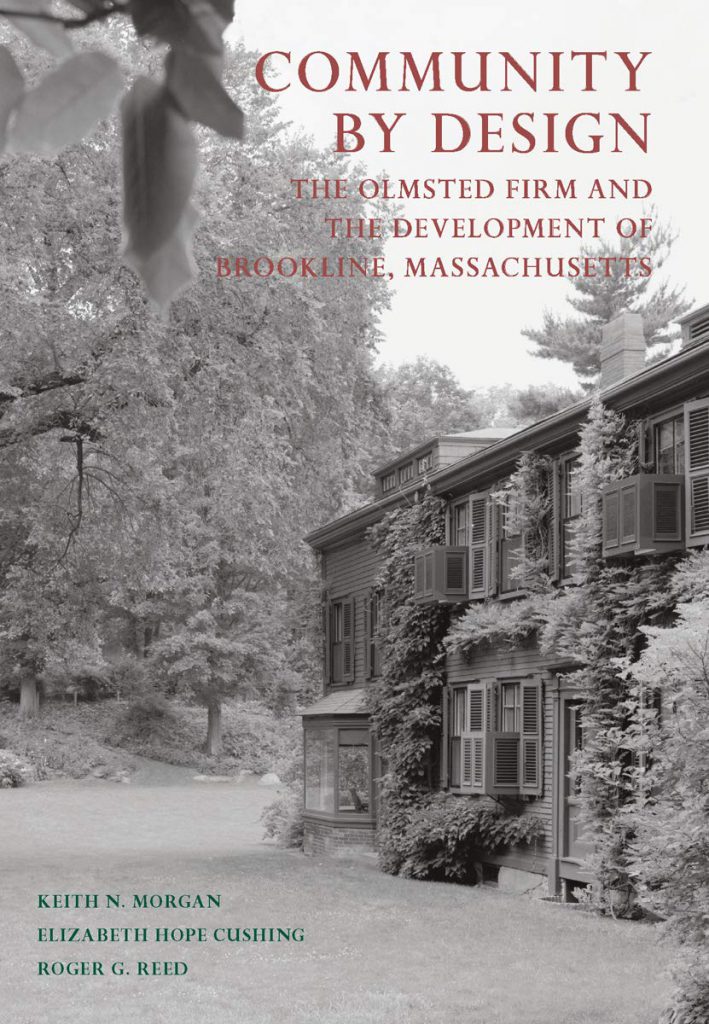Community by Design
The Olmsted Firm and the Development of Brookline, Massachusetts
Keith N. Morgan, Elizabeth Hope Cushing, and Roger G. Reed
Library of American Landscape History
| ISBN: 978-1-952620-22-5 | 320 pages | 7 x 10 inches |
| $40.00 | Cloth | Published: 02/05/2013 |
| 132 b&w photos and drawings | |
In 1883, Frederick Law Olmsted Sr. deserted New York City for Brookline, Massachusetts, a Boston suburb that anointed itself the “richest town in the world.” For the next half century, until Frederick Law Olmsted Jr. moved to California in 1936, the office received over 150 local commissions, serving as the dominant force in the planned development of this community. From Fairsted, the Olmsteds’ Brookline home and office, the firm collaborated with an impressive galaxy of suburban neighbors who were among the regional and national leaders in the fields of architecture and horticulture.
Through plans for boulevards and parkways, residential subdivisions, institutional commissions, and private gardens, the firm carefully guided the development of the town, as they designed cities and suburbs across America. Frederick Law Olmsted Sr. and Jr. and their associates represented a new cohort of professionals who worked well in tandem with the wealthy, ensuring both the visual quality and the social hierarchy of the town’s environment.
While Olmsted Sr. used landscape architecture as his vehicle for development, his son and namesake saw Brookline as grounds for experiment in the new profession of city and regional planning, a field that he was helping to define and lead. Little has been published on the importance of Brookline as a laboratory and model for the Olmsted firm’s work. This beautifully illustrated book provides important new perspective on the history of planning in the United States and illuminates an aspect of the Olmsted office that has not been well understood.
2013 Ruth Emery Award, Victorian Society in America
About the Authors
Keith N. Morgan
Keith N. Morgan, FSAH, a professor of art history and director of architectural studies at Boston University, is the author of Shaping a New American Landscape: The Art and Architecture of Charles A. Platt and Boston Architecture, 1975–1990, coauthored with Naomi Miller. He is also the editor and a principal author for Buildings of Massachusetts: Metropolitan Boston and the architecture editor for The Encyclopedia of New England.
Elizabeth Hope Cushing
Elizabeth Hope Cushing is a practicing landscape historian who consults, writes, and lectures on landscape matters. She has written cultural landscape history reports for the Taft Art Museum in Cincinnati, The National Park Service, the Department of Conservation and Recreation of the Commonwealth of Massachusetts, and other institutions and agencies. Her contributor credits include Pioneers of American Landscape Design, Design with Culture: Claiming America’s Landscape Heritage, Shaping the American Landscape, and Drawing Toward Home.
Roger G. Reed
Roger G. Reed is a historian for the National Register of Historic Places and the National Landmarks Program. He is the author of several books and articles, including Building Victorian Boston: The Architecture of Gridley J. F. Bryant.
